 When I found this camera in a thrift store, I wasn’t sure it would ever work well enough to see film again. It was in sorry shape. The lens assembly was loose, the shutter was gummed up to the point of being completely non-functional, and the aperture ring barely budged. But it had “good bones,” as they say in the real estate world, so I offered $20 for it, which the clerk eagerly took—a little too eagerly perhaps!
When I found this camera in a thrift store, I wasn’t sure it would ever work well enough to see film again. It was in sorry shape. The lens assembly was loose, the shutter was gummed up to the point of being completely non-functional, and the aperture ring barely budged. But it had “good bones,” as they say in the real estate world, so I offered $20 for it, which the clerk eagerly took—a little too eagerly perhaps!
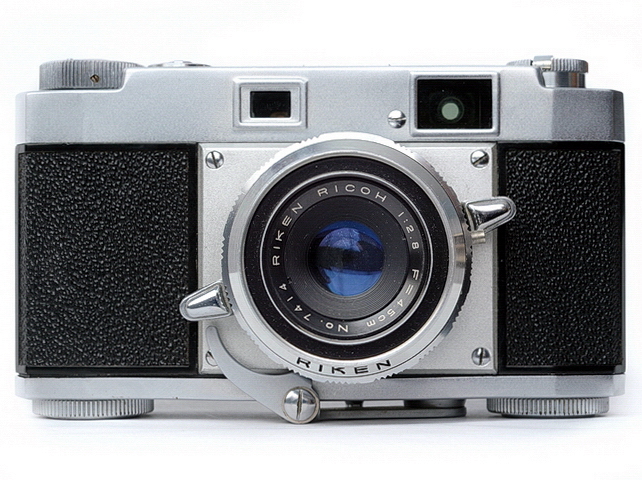 I’m not a repair guy. Most of my fix-up efforts result in a bag full of parts marked “for later.” But every once in a while, I manage to rehabilitate a camera. Being able to do so is virtually a prerequisite if you have a fondness for cheap, vintage gear, which I do. According to sources on the web, this model of Ricoh hit the market in February 1957, which means my camera is likely 60 years old. Little wonder it wasn’t in the best of condition. My only hope was that with enough care (and luck) I could transform this hunk of metal and glass into a working photographic instrument.
I’m not a repair guy. Most of my fix-up efforts result in a bag full of parts marked “for later.” But every once in a while, I manage to rehabilitate a camera. Being able to do so is virtually a prerequisite if you have a fondness for cheap, vintage gear, which I do. According to sources on the web, this model of Ricoh hit the market in February 1957, which means my camera is likely 60 years old. Little wonder it wasn’t in the best of condition. My only hope was that with enough care (and luck) I could transform this hunk of metal and glass into a working photographic instrument.
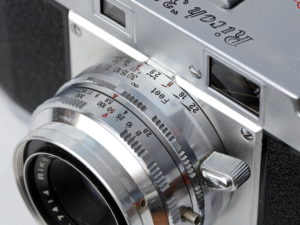
The camera’s exposure controls and one of the two focusing “ears” are shown here. (Click on the image for a larger version.)
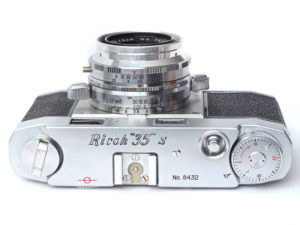
This top view shows (from left to right) the film rewind lever, flash hot shoe, shutter release, and combination film counter and film advance knob.
So what exactly are we dealing with here? The Ricoh “35” S is a 35mm coupled rangefinder with a fixed, 45mm f/2.8 Riken lens. Confusingly, there’s also a Ricoh 35 S (no quotation marks) that’s completely different, and a Ricoh 35 that predates the “35” S, but is also distinctly different. Shutter speeds on my sample run from bulb, to 1/300 second (typical for leaf-type shutters from this era) while the aperture spans from f/2.8 to f/22. There’s no light meter, so you have to use an external unit or go “sunny 16.” I have a meter, so this isn’t a problem for me.
I really like the way this camera looks and how nice it feels in the hand, so I was highly motivated to get it working. I spent a couple of weeks of evenings carefully taking the Ricoh apart and giving it a thorough cleaning. At one point I had both the shutter and aperture mechanisms completely disassembled and wasn’t entirely certain I’d ever get them back together. But when I had those parts reassembled, for the first time I thought to myself, “you know, I just might get a working camera out of all this.”
Once the Ricoh was cleaned and fully reassembled, I loaded it with film to see if my repair efforts had been successful. To my great relief, when I pulled the roll out of the developing tank and held it up to the light, I could see that this ancient camera was functioning well. I was exited, relieved, and pleased all at once.
So after shooting with the Ricoh “35” S, here’s what I like about it. First, the viewfinder features one of the easiest-to-see rangefinder patches I’ve ever used, making accurate focusing a snap. I also appreciated the “ears” on either side of the focusing ring, which made precise focus adjustments that much easier to accomplish. The Ricoh has a nifty, fold-out “rapid advance” trigger below the lens. I don’t think I’ve seen this implementation before. It works well enough, but mostly I use the film-winding knob on the top plate.
As I mentioned already, the most appealing aspect of the camera is that feels good in the hand and is inviting to shoot. Part of that is also the aforementioned view finder—for me, much of the experience of using a camera rests on how pleasurable that one feature is.
What’s not to like? The close-focus distance is three feet. Not terribly unusual for a rangefinder, but it would be nice to get a little closer to my subjects some times. Also, the camera lacks strap lugs, which means if you want to attach a strap, you have to use an ever-ready case. Not a big deal really, but also not ideal—especially if you don’t have the appropriate case. Finally, some will probably find the fastest shutter speed a bit limiting, but if you’re happy shooting ISO 400 and slower film (which I am), this is a non issue.
Overall, I’m very pleased with this camera. It’s a lot fun to shoot and the lens produces results that are sharp and free of obvious aberrations. Plus, there’s something extra special about using a piece of equipment that you’ve brought back from the dead. It doesn’t make your photos any better, but it does make the shooting experience just a bit more rewarding.
For sample photos, have a look here.
Did you find this article interesting or helpful? If so, consider using this link the next time you shop at Amazon.com. Better yet, bookmark it for future use. Thanks to Amazon’s associates program, doing so costs you nothing yet helps keep this site up and running. Thanks!

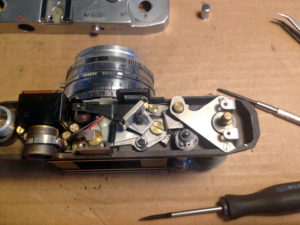

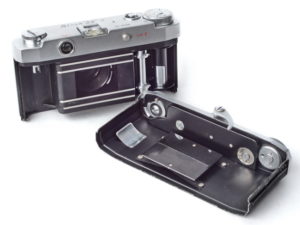
 Subscribe with RSS
Subscribe with RSS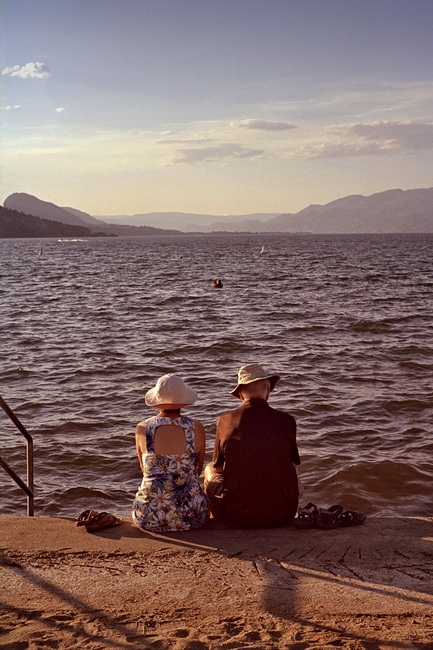


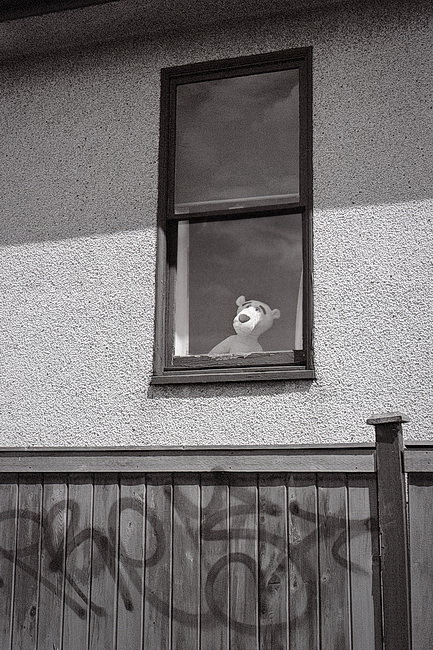
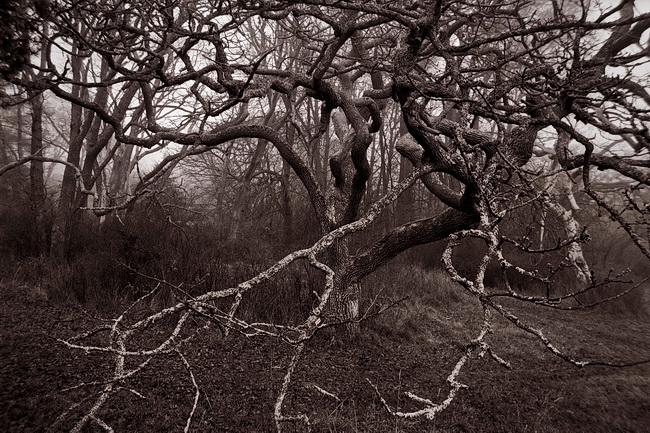
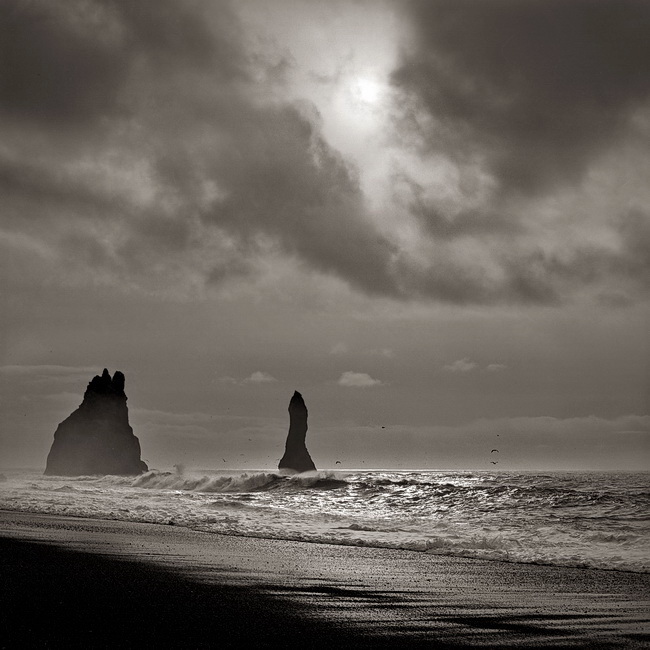
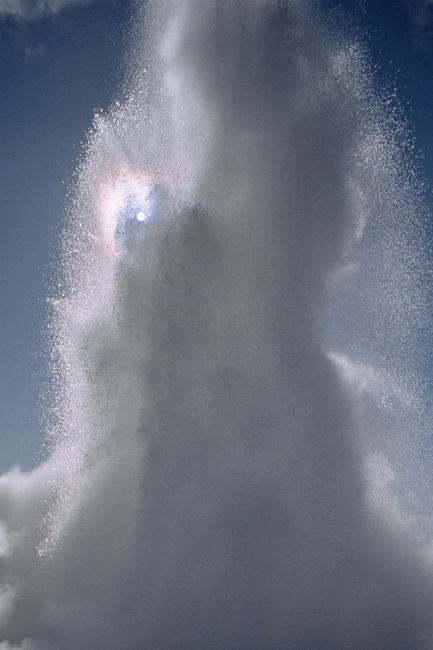


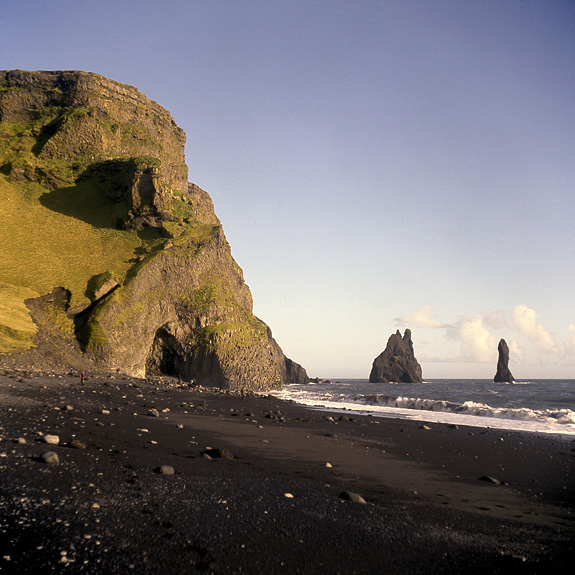
I admire anyone willing to take off a top or bottom plate. I just won’t go that far. But this camera was clearly worth the effort. It’s beautiful.
Gary, nice work to get this excellent camera to work again. The “35” S must be the forerunner to their terrific Ricoh 500 (2.8, 1/500 top speed). The 35 series used a 3.5 lens while the “35” S used the newest 2.8 lens. Ricoh lenses are still some of the best 35mm lenses – and pricey today. Ricoh stopped making camera lenses and became the very best ($$$) office copiers – there’s their lenses again. Got my very first 35mm camera, the Ricoh 500, with I was 14. And am still using these cameras. We carried these cameras around in their bottom case so that’s why so many of them LOOK nice today. Straps connected to the case. Price of the 500 in 1957: $49.95. EXPENSIVE back then.
Did you find that you can fix stuck shutters, etc. thru the top cover? Any photos of your efforts? A parts manual would be priceless!
Thank you …
Hi Gary:
Typical of such cameras, you have to get at the shutter mechanism through the front of the lens, though if I remember correctly the whole front lens/shutter comes off as a single assembly. It’s been a while, but if remember correctly there was a lot of disassembly required to get at the shutter blades and clean them properly. But it is a nice camera and operates almost silently.
Gary
Hi Gary,
Very interesting posts. I just bought a Ricoh “35” S at the Boroichi Market in Tokyo. Sold as is for about $37. It looks to be in good shape with the original leather case, even though I just liked it as an object with solid precise construction. Shutter and controls seem to operate with no sticking. When I got it home I figured out how to open the back and discovered a roll of kodak 400 inside, I assume with exposed images. I began to think it may be a working camera. I’ve never tried to disassemble a camera to clean it but after seeing your posts I am emboldened to see if it can get it to reasonable working condition. The images you show are beautiful. Assuming it’s working and just needs some tuning, are there any recommendations you have that don’t require complete disassembly and reassembly? Thanks in advance. Tom
Hi Tom:
If it seems to be working, I’d put a roll of film in it and take it for a spin. If it ain’t broken…
Gary
I just picked up a beautiful copy at a flea market, complete with intact leather case. It’s a camera that’s been on my “list”. so I’m pleased to get it. I’ll do a cleaning and run a roll through it! Do you know the filter size? It’s seems to measure 33 or 34mm.
Congrats John. I don’t know the answer to your filter question. If you find out, let me know!
Hi I just got this camera. I was just wondering if you can attach a flag to this camera. If so what kind of flash will work for this camera . Thanks